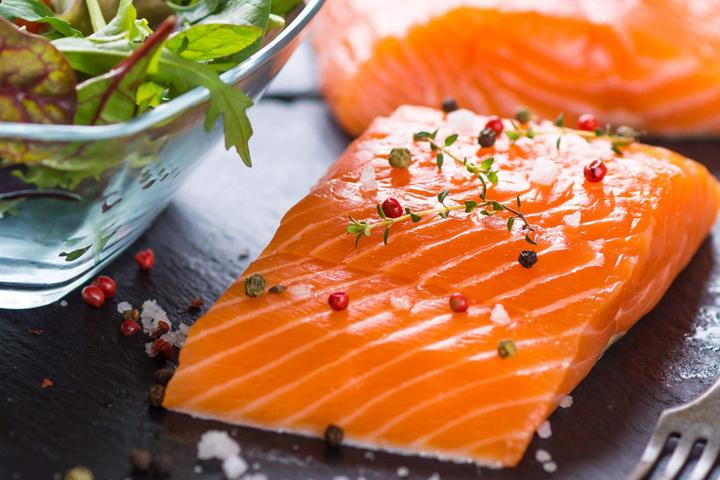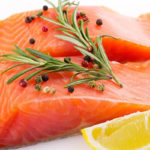When it comes to DHA-rich foods, fish is the number one choice. Fish is easily digestible and absorbed by the body compared to other types of meat, making it suitable for the immature digestive system of children.
Von salmon
First is the Von salmon, although it is a freshwater fish, every 100 grams of salmon contains 550 mg DHA.

Although Von salmon looks similar to regular salmon, experienced people can easily tell the difference at first glance. If you look at the overall picture, Von salmon has a pink stripe, while regular salmon does not.
If it is filleted, it is very easy to distinguish between the two types. Salmon flesh is relatively red, while Von salmon flesh is relatively pale with clear veins. But if the fish is filleted separately and you are a beginner, it will be very difficult to tell them apart.
Second is eel
100g of eel contains 1,300mg of DHA, in addition to being rich in vitamin B group and vitamins A, E, D.
However, eel has many bones, so when preparing eel for children, you need to be careful when removing the bones. Eel meat is very tender and nutritious, often prepared as a dish like eel porridge, suitable for children’s breakfast.
Yellowtail fish
Yellowtail fish is a premium fish in Japan, often used to make sushi or sashimi. The flesh of the fish is very tender, whether eaten raw or cooked, it has an excellent taste.
This is also the type of fish that many Japanese mothers feed their children regularly from a young age to stimulate brain development. In addition to yellowtail fish, Japanese children also eat salmon regularly.
Natural salmon
Salmon is one of the best fatty and benign fish. This type of fish has the lowest mercury content and is especially rich in DHA, which helps stimulate brain development, especially for children in the process of growth. Depending on whether it is farmed or wild salmon, there will be differences in nutritional content.

In addition, salmon is also high in protein, potassium, selenium, magnesium, and vitamin B.
Sardine
Sardines are small fish that are usually canned and used as a snack or appetizer. One serving of sardines usually contains 0.74g of DHA and 0.45g of EPA. In addition, sardines provide beneficial minerals and vitamins such as selenium, vitamin D, and vitamin B12.
Although fish is recommended for children, it is not always good to eat a lot. You should adjust the appropriate amount of food depending on the age of the child. Children aged 1-3 should eat 2 times a week, children aged 4-6 eat 3 times a week, older children can eat a little more.
“3 Simple Steps to Remove the Fishy Smell of Salmon”
Are you looking for ways to get rid of that unpleasant fishy smell associated with salmon dishes? If so, we have some useful tips that can help you make a delicious and healthy meal without the fishy odor. Keep reading to learn our easy-to-follow suggestions for removing the odorous smell from salmon dishes!
Exploring Natural Foods for Allergy Relief
Dealing with allergies can be difficult and uncomfortable, especially for young children. Allergens such as pollen, cosmetics, and insects can cause serious issues for those affected. However, knowledge of the symptoms and taking the necessary precautions can help alleviate the troublesome effects of allergies, like itching, sneezing, and irritation.



































